🚨"Vitamin A" POPULATION CONTROL: United Nations Food Fortification Program 🚨 PART 3, Retinol POISON
THE EVILEST "VITAMIN" YET! This turned out to be the craziest deep-dive thus far. Who would have thought "Vitamin A" would be such a rabbit hole?
If you are new to this rabbit hole, let me explain how I got to the point of researching Vitamin A, because the series of alarming discoveries prior to this article laid the foundation for this post.
My first article in this series was Vitamin D is Rat Poison. After that discovery, I needed to know if this poison is limited to just Vitamin D, or if it’s several Vitamins.
Next came Vitamin B is Cyanide, which is equally hazardous and happens to be the second most popular “vitamin” consumed in the USA.
The third Vitamin I researched was Vitamin C, which is also toxic AF and has deep ties to Eugenics and the population control movement. And, the man associated with the discovery of Vitamin C was pressing for laws to be passed that would result in humiliation rituals targeting African American citizens.
Next came Omega-3 Supplements (and “Fish Oil”), which may be worse than all the others because, other than being a hazardous carcinogen, the contents appear to target genes and edit or repress them. It disrupts puberty, yet the ingredients are being added to nearly all processed foods and also being consumed voluntarily as a supplement.
I then wrote Fish Now Contains Soy, which is a shocking look at what we are now being fed as fish.
In my sixth article, I published the crazy history of food Fortification and Enrichment, in a piece called Poison Food Supply: The History of Fortification - Adding Toxic Chemicals Under the Guise of VITAMINS. It’s a mind-blowing tale of corporate greed, bribery and extortion, which resulted in our food supply being flooded with chemicals, under the guise of “adding vitamins”
The next piece, VITAMIN POISON: UNITED NATIONS FOOD "FORTIFICATION" PROGRAM, revealed an authentic United Nations document which outlines exactly which chemicals they insist are to be fed to us through the food supply, for our health, of course! In that article we looked at the UN’s requirements for Iodine and Iron fortification, which includes industrial waste byproducts.
And here we are, on the current part of the series, still looking at the same UN document, which states that Vitamin A chemicals must be used to fortify our consumables. My research into this “Vitamin” revealed that it is, quite possibly, the most horrifying yet because it is clearly part of the population control agenda.
So, go put on your wetsuit, Sweetheart, because we are about to dive deep today:
I write these articles as I research, so as you read this, you are going on the same journey I did to investigate:
WHAT IS VITAMIN A?
According to the United Nations, Vitamin A is found in fruits and vegetables, “mostly of red and orange color, such as carrots, pumpkins, melons, apricots, tomatoes, watermelons, and peppers”. Ok, awesome. I like all that stuff!
The United Nations, through Codex Alimentarius (their “food standards” branch) claims people are not getting enough Vitamin A, therefore it is mandatory that our food supply be “fortified” to keep us healthy. How nice of them!
Codex states that so far they have successfully fortified-with-Vitamin-A, margarine, fats and oils, milk, sugar, cereals, and instant noodles with spice mix. But, for some reason, I do not think the UN is adding fruits and vegetables to these foods, so what exactly are they fortifying them with? (By the way, you guys realize they could fortify them with dehydrated produce, right? But they don’t want that. They want chemicals. Hell, for the amount of money spent on fortification, they could instead send everyone crates of produce, but again, they don’t want that).
The UN fortification program document goes on to say that it can be difficult to fortify foods with Vitamin A because the chemicals don’t react well to heat. The chemicals? Last I checked, fruits and vegetables are not chemicals, so lets try to figure out what Vitamin A is, in terms of the chemicals being sold to us as supplements:
WHAT ARE WE BEING SOLD AS “VITAMIN A”?
Let’s head over to Amazon and read some ingredient labels. Hopefully we can find some answers:
Protocol Vitamin A 25,000 IU
This contains Retinyl Palmitate and Fish Liver Oil (Lord I hope this is different from the super toxic Fish Oil I just wrote about)
Nutricost Vitamin A 10,000 IU
This product is more expensive than the last one:
It contains the same “Retinyl Palmitate” but does not contain Fish Liver Oil. Interesting:
Mary Ruth’s USDA Organic Vitamin A Liquid Drops
In my Vitamin B is Cyanide post, I shared with you that Mary Ruths was my go-to trusted brand because it’s labeled “organic”, and I will pay the extra money to avoid chemicals. However, in the case of Mary Ruths Vitamin B, it contained the identical Cyanide-derived hazardous carcinogen B12 as every other product. The only “organic” thing in that B12 bottle was the “pineapple flavor”. Let’s see if Mary’s Vitamin A is the same scam:
Yep, it sure as hell is. It contains the exact same Vitamin A ingredient, “Palmitate”, and it also contains super toxic synthetic “dl-alpha-tocopherol”! We learned about that Level 1 Health Hazard chemical concoction in my Omega-3s are Deadly post:
The only organic thing in this bottle of Mary Ruth’s Vitamin A is the MCT Oil, but it is intentionally misleading, just like Ruth’s other organic products.
Designs for Health 5000 IU Vitamin A Drops
This is the most expensive one, so far. $29.99 for this little 1oz bottle, so it must be some good sh*t, right?
But look at this, it’s the exact same ingredient, Palmitate! It also contains “Vitamin E”, which we previously learned is Soy Oil, Palm Oil, Canola Oil and/or Fish Oil (chemical blend) all of which are horrible for us.
Bronson Vitamin A 10,000 IU Premium Non-GMO Formula
Because people are sick of the food supply being infiltrated by genetically modified bullshit, this is “Non-GMO” product is a best seller on Amazon. It has almost 20,000 positive reviews as of February 11th, 2024.
But it’s just like the others, Retinyl Palmitate and Soybean Oil too:
I changed my Amazon search to “NATURAL Vitamin A”
Why Not Natural Brand Vitamin A Drops 10000 IU
The brand name includes the word Natural and it looks so healthy! Look at the little green leaves!
But alas, it’s the exact same ingredient, Palmitate:
I’m still not sure what this Palmitate is yet, but do you want to feel sick to your stomach? Check this out…
Enfamil Prenatal & Baby Vitamins Tri-Vi-Sol Vitamin A, C & D Multi-Vitamin Drops for Infants
… no ingredients label photo on Amazon is always a bad sign! Through my research I have discovered, if they don’t show an ingredients label photo, it’s a really-really-extra-bad product. But it has almost 19,000 reviews…
To find the ingredients list you have to scavenger-hunt the Amazon webpage, it’s always hidden somewhere near the bottom… and now I see why:
These famous-brand prenatal and baby vitamins are loaded with carcinogens and assorted poisons, including Carmel Color (an exceptionally hazardous toxin), Vitamin C from Ascorbic Acid (which is GMO Corn Syrup, Mold, Chemicals, Bacteria, Bleach and More), Vitamin D3 (Rat Poison and Chloroform) and whatever this Vitamin A Palmitate is, just like the adult supplements. Additionally, this prenatal and baby Vitamin-blend contains Polysorbate 80, which has caused Tumors and Developmental Disabilities in animals when tested.
So, all of these supplements, whether for adults, pregnant mothers, children or infants, are Vitamin A as “Retinyl Palmitate” or “Palmitate”. I would later discover that Retinyl (also spelled “Retinol”) is another name for Palmitate, which is another name for Vitamin A. So whenever you see the words Vitamin A, Palmitate, Vitamin A Palmitate, Retinyl or Retinol, they all mean the same thing. I will show you this research shortly. But first, what is this “Palmitate” that we are consuming as Vitamin A?
WTF IS “VITAMIN A PALMITATE”?
Science cannot make natural Vitamins. Science can only make lab-created, chemical Vitamins. These lab-made concoctions are referred to as Synthetic Vitamins, Supplements and Dietary Supplements. This means that while Vitamin A is (allegedly) found in a carrot, Science cannot make a carrot, let alone replicate all of the miraculous nutrients inside the carrot, so Science makes chemical “Vitamin A Palmitate” and claims it is identical to eating the carrot. But is it? To find out if this lab-made chemical is truly identical to the nutrients inside the carrot, we need to dig into what Palmitate is.
According to Healthline.com, “Vitamin A Palmitate can be taken in supplement form to support and maintain optimum eye health, immune system health, and reproductive health.” We already know the word “supplement” means chemical, so it is indeed a chemical, but it’s a wonderful chemical that keeps us healthy, including reproductive health! Woo hoo! In case you missed that, I said, “including reproductive health!”, followed by, “Woo hoo!” ← log all of that in the back of your memory. You will need it in a few minutes. Do you have it logged? Ok, cool. Let the digging begin!
THE INVESTIGATION BEGINS
Now that we know what we are looking for, a chemical named Palmitate, I head back over to IndiaMart.com, a website which has been crucial for my investigations into Vitamin D, C, B and Omega-3’s. IndiaMart is a marketplace for bulk chemical manufacturers and buyers. I like the site because it gives us the opportunity to see the actual chemicals we are being fed and sometimes we can find ingredients labels. And, because almost all vitamins, supplements, pharmaceuticals, food additives and other “healthy” chemicals are manufactured in India and China, we can use IndiaMart to see lots of different varieties of the chemical, such as powders vs liquids and drums vs cases.
On IndiaMart, I ran a search for “Palmitate”. Here we discover that it can be purchased in powder or liquid, depending on if the vitamin manufacturer wants to make drops or pills or blend it into food or drink:
It also comes in tan-color if you want your Vitamin to look more natural:
And big jugs! These jugs are almost as big as Bill Gates titties (seriously, have you seen that dudes rack?):
The jugs remind me of the 6-pack of emergency gas containers my employer has in the storage closet, which is kinda creepy, because this is a Vitamin, not gasoline… right?
If you need a lot of Vitamin A, you can buy a large quantity of it for only $60 USD per kilo! That’s one hell of a deal considering a little bottle of Vitamin A pills is $8-$40! We should cut out the middleman and buy direct from this seller, “Chemignition Laboratory”, in India!
Vitamin A even comes in metal drums, which sure looks nutritious! It also is seeming even more like gasoline… isn’t it?
I’ve noticed an ongoing trend in which the sellers of these chemicals make the labels on drums of Vitamins blurry. The intentional blurring is so bad that I can’t clean it up in Photoshop, again, we must ask, “WHY?!”. Here’s the blurry gasoline Vitamin-A-in-a-metal-drum label:
Did you notice the giant, blurry warning image? I guess they didn’t blur it enough because we can see it…
And this is where things get interesting… reallllly interesting…. time to bring out the red flags…
I looked up this icon in Hazard Symbol Database and guess what it means?
SERIOUS HEALTH HAZARD
Yep, "Vitamin A Palmitate”, is a serious health hazard. It’s not just a health hazard, it’s a SERIOUS HEATH HAZARD… which is odd, because we just learned from Healthline that this chemical is great for our health (woo hoo!)
Lets dig more to find out why exactly Vitamin A, known as Palmitate, Vitamin A Palmitate, Retinal, Retinyl and Retinol is a serious health hazard.
I found Vitamin A Palmitate on PubChem. Yep, same icon:
I pulled up the Safety Data Sheet (SDS), also known as a Manufacturers Safety Data Sheet (MSDS), which is a legal requirement for chemical manufacturers to provide. The MSDS explains to the purchaser what the chemical shouldn’t be mixed with, what protective gear should be worn when handling, health hazard information and so on.
Here we discover some seriously alarming info:
Vitamin A Palmitate does cause skin irritation (but don’t worry, if you’re swallowing it in a pill or drops it won’t touch your skin!)
It does cause damage to organs through prolonged or repeated exposure (such as taking it daily? Like that type of repeated exposure?)
It may damage fertility and it may damage an unborn child… In fact, It is so dangerous to women and pregnant mothers that there is a Danger Reproductive Toxicity warning on Vitamin A Palmitate. Do you remember how I told you to log that info in the back of your mind? It’s time for you to recall that information… go ahead and recall it, I’ll wait… … … … ….
…Healthline told us it was great for “reproductive health”! (woo hoo!) …
…Where have we heard the phrase “reproductive health”?…
…I could have sworn were heard those two words in that phrase somewhere before, but where?…
…Reproductive Health…. gosh, it sounds so familiar…
…hmmm… It’s seeming to slip my mind... if you remember, shout it out!…
Oh, yes! THANK YOU! Now I remember!
BILL GATES.
Specifically, The GATES INSTITUTE FOR POPULATION AND REPRODUCTIVE HEALTH:
And
And
Oh yes, this too!:
I can’t believe we almost forgot about the Gates Foundation Contraceptives, Family Planning and Reproductive Health!:
Do you remember this Ted Talk clip featuring Billy-boy Gates, about “Reproductive Health”? (57 second video)
So now it’s starting to allllll make sense:
Vitamin A chemical, as Healthline pointed out, is great for Reproductive Health… because it may harm fertility and an unborn child, which means population control “family planning”!
Despite these warnings, it is being marketed to pregnant mothers in prenatal Vitamins.
Further research shows that in animal studies, Vitamin A Palmitate can lead to birth defects, deformities, still-birth and infertility. IN FACT, in humans, Vitamin A and, other teratogens, account for 5% OF ALL BIRTH DEFECTS!
I repeat,
“VITAMIN A” SUPPLEMENT AND OTHER TERATOGENS ARE RESPONSIBLE FOR 5% OF ALLLLLLLL BIRTH DEFECTS!
That means 5% of ALL birth defects could be completely prevented by telling pregnant mothers not to consume synthetic Vitamin A (teratogens). Imagine how many birth defects could be stopped if pregnant women were told not to take ANY supplements!
Additionally, this chemical has a huge list of “precautionary codes”:
But, the way the codes on the MSDS work is intentionally confusing. You have to locate additional documents to figure out what they mean. I plan to write a post explaining how you can do all of this on your own and I will include all of the direct links to the documents you need, but, in the meantime, I pretended I was Dog the Bounty Hunter and tracked down the Precautionary Statement Codes list. These codes mean Vitamin A is a fire hazard because it is highly flammable, as well as being highly explosive, but if you’re eating it, it’s fine because your stomach acids can totally handle explosives. Just buy some TUMS antacid, chew up a couple of those then wash it down with the Vitamin A chemicals then head into work to start the day.
DUDE! I just had a thought that blew my own mind, want to hear it? In addition to the United Nations insisting our food is laced with Vitamin A, our skin is our biggest organ, so when we use this chemical Vitamin-A-infused sh*t like lotion, shampoo or whatever, WE ARE ALL ABSORBING FERTILITY-REDUCER THROUGH OUR SKIN!
That’s why they’re even putting these Vitamins into baby wipes!
Baby Vitamin Shampoo!
When I was Google searching Vitamin products for babies, I found something shocking. Wanna see it? Of course you do:
Did you know that Merck’s chemical company, Millpore Sigma, sells “Baby Food Composite” for $1,790?
And look at this, “NOT FOR HUMAN CONSUMPTION”:
According to the label, every bottle gives you “70 grams of material”.
The MSDS says it is a lab chemical, called “Baby Food”:
But, as the angry emails I receive after authoring anything (but especially Vitamin content) state, I just don’t understand THE SCIENCE. My official, on-the-record response is (feel free to quote me):
“If Science is consuming a lab-made chemical labeled Serious Health Hazard because it causes 5% of all birth defects, I don’t want to understand it. You and Bill Gates can take your Science, your toxins and your Reproductive Health and go f*ck yourself with it (no lube).”
FURTHER DOWN THE VITAMIN A PALMITATE RABBIT HOLE
It gets so much worse…
I went back to PubChem to look up aliases (“synonyms”), meaning other names that Vitamin A Palmitate can go by on a product label, an MSDS, or anything. Check out this mind-blowing list. This is seriously going to make you sh*t your pants, so if you have an adult diaper in reach, grab it now:
Vitamin A Palmitate (Synonyms)
[(2E,4E,6E,8E)-3,7-dimethyl-9-(2,6,6-trimethylcyclohexen-1-yl)nona-2,4,6,8-tetraenyl] hexadecanoate
3,7-dimethyl-9-(2,6,6-trimethylcyclohex-1-en-1-yl)nona-2,4,6,8-tetraen-1-yl hexadecanoate
(2E,4E,6E,8E)-3,7-Dimethyl-9-(2,6,6-trimethylcyclohex-1-en-1-yl)nona-2,4,6,8-tetraen-1-yl palmitate
Retinyl palmitate, United States Pharmacopeia (USP) Reference Standard
[3,7-dimethyl-9-(2,6,6-trimethylcyclohexen-1-yl)nona-2,4,6,8-tetraenyl] hexadecanoate
3,7-Dimethyl-9-(2,6,6,-trimethyl-1-cyclohexen-1-yl)-2,4,6,8-nonatetraen-1-ol palmitate
(2E,4E,6E,8E)-3,7-dimethyl-9-(2,6,6-trimethyl-1-cyclohexenyl)nona-2,4,6,8-tetraenyl hexadecanoate
(2E,4E,6E,8E)-3,7-Dimethyl-9-(2,6,6-trimethyl-cyclohex-en-1-yl)-2,4,6,8-nonateetraen-1-yl-palmitate
(2E,4E,6E,8E)-3,7-dimethyl-9-(2,6,6-trimethylcyclohex-1-enyl)nona-2,4,6,8-tetraenyl palmitate
AND, some of the names commonly used on skincare labels containing “Vitamin A”:
retinol
retinol palmitate
hexadecanoate retinol
vitamin a palmitate
axerophthol palmitate
hexadecanoate
aquasol a
arovit
optovit-a
And of course, Vitamin A
It’s such a great Vitamin that they have to hide it? Have I ever mentioned that sometimes I feel like we are living in one big insane asylum?
WHAT’S IN RETINOL?
We already know Vitamin A is also known as Retinol (and nearly 200 other names), which is a Serious Health Hazard, but what exactly is in it?
I noticed that on the Synonyms list, the very top alias is “retinyl palmitate”, so I pulled up the Manufacturers Safety Data Sheet (MSDS) for Retinyl Palmitate so we can try to scrape some ingredients from it.
Here we see it should only be used in lab research and is not for humans:
Here’s the same warnings we have already seen, in addition to “harmful to aquatic life with long lasting effects”, let me remind everyone, our bodies are 60% water, so if it’s hurting things that live in water, what is it doing to us? I guess we need to chew up more TUMS?…
If you read further down the MSDS, it has more details regarding symptoms from exposure, and this really surprised me, because I thought the other warnings were bad enough. I didn’t expect it to get way worse. Here’s some red flags followed by the symptoms from exposure list:
I don’t know what some of those words mean, so let’s find out:
Symptoms include:
anemia - which is wild, because they tell us we need to supplement Vitamin B (Cyanide) and Vitamin A to prevent Anemia… yet the chemical vitamins cause Anemia, “if too much is taken”, but there is no way to know if “too much is taken” because they add it to everything… under 200 different names… and we voluntarily dose ourselves with it…
cough - it might not be Covid, it might actually be VITAMINS!
CNS depression. I've never heard of this, so I looked it up for us. Holy cow, this is nuts: “Central nervous system (CNS) depression is a physiological state that can result in a decreased rate of breathing, decreased heart rate, and loss of consciousness, possibly leading to coma or death”, “It is the result of inhibited or suppressed brain activity.” Guess what the treatment for CNS is? Seriously guess… … … … … MUTHERF*CKING GENE THERAPY! Wrap your mind around that… the treatment for VITAMINS is GENE THERAPY. Do you agree, insane asylum?
drowsiness - This was a major OMG-moment for me, because I just figured out why my “afternoon grog” vanished shortly after I quit taking vitamins. Listen to how crazy this is, because it may be an OMG-moment for you too:
It turns out that it takes our bodies 3-3.5 hours to break down chemical Vitamins and another 30 to 60 minutes for the Vitamin to fully circulate through our system. This means, if you take your
chemicalsvitamins at 9am, they will start to “hit” you between 12pm-12:30pm, and it will be fully circulated through your body around 1pm! THIS IS THE “AFTERNOON GROG”! Is it just me, or are you also amazed? And, after the amazement subsided, I was like, “Well duh. I was micro-dosing myself with poisons in the morning, so it makes sense that I felt exhausted by 1pm”…headache - Also vanished when I quit supplements.
heart damage
lassitude (weakness, exhaustion) - Yet another symptom I was suffering. Afternoon grog and feeling whooped all the time.
liver damage
narcosis, which means “a state of stupor, unconsciousness, or arrested activity produced by the influence of narcotics or other chemical agents.” By “chemical agents” they mean VITAMINS!
reproductive effects - AKA: “Reproductive Health” , AKA: Time to Google Search “Fertility Clinic Near Me” and withdraw $20,000 from your retirement fund to have the baby you’ve always dreamed of.
teratogenic effects - “A teratogen is a substance that interferes with normal fetal development and causes congenital disabilities. Drugs, alcohol, chemicals and toxic substances are examples of teratogens. Teratogens can also increase the risk for miscarriage, preterm labor or stillbirth”, it goes on to say, “Environmental exposure to teratogens can cause long-lasting effects such as infertility, intrauterine growth restriction, structural defects, and functional central nervous system abnormalities that may lead to fetal death” … Vitamin A is a teratogenic chemical.
bone thinning - just like with Vitamin D3 Supplements, these chemicals strip bones of calcium. High intake or prolonged use of Vitamins leads to broken bones and fractures from minor slips and falls that would not typically result in any injury. I’ll share my crazy story about this nightmare with you in the future.
pain in joints
increased risk of bleeding if taking "other medications". (In the case of Fish Oil, it can cause everything from bleeding to reactivation of Herpes to heart issues and more)
I’m running out of red flags, but I just discovered there is another type of Retinol, “All-Trans-Retinol”, also known as Vitamin A. This is what is used often used when it is in skin care. Science is pushing it as being critical for fertility, immune function and more!:
It too is a lab chemical, not for humans:
It is very dangerous, therefore labeled a Category 2 Health Hazard, which means it can cause severe, permanent harm with prolonged or repeated use:
And, it too is known to cause damage to an unborn child. Family planning… :
At this point in my research, I feel sick to my stomach because look how many reviews these Vitamin-A PRENATALS have:
All of these pregnant women are spending their hard-earned money on trying to make sure their baby is as healthy as possible, while not realizing it is literal poison that gives them a 5% chance of birth defects, in addition to the possibility of a miscarriage or still birth! Almost 24,000 reviews on some of these!
And the babies with birth defects are then put into the medical system where they will be further pumped full of chemicals. Its so damn sad. And so much of it is fully preventable if we didn’t fall for this diabolical lie.
HOW RETINYL IS MADE
I have spent hours trying to locate any form of ingredients list that shows the individual chemicals used to make Vitamin A, and I have had no luck at all, so I figured we will switch direction and try to uncover how it’s made. Maybe we will get lucky and scrape some ingredients this way.
AH-HA! I THINK I FOUND IT
It took two hours, but I located a Europe website that appears to be for chemical registration.
Here we learn Dietary Vitamin A, is mostly in the form of retinyl esters, and we discover the process to make Retinyl Palmitate:
“The esters undergo hydrolysis to release retinol, which is incorporated into mixed micelles and absorbed by enterocytes, where it is bound to an intra-cellular protein called CRBPII (cellular retinol binding protein II). It is then re-esterified to form retinyl esters. The esters are incorporated into chylomicrons and are hydrolyzed in the general circulation. Chylomicron remnants are taken up by tissues, particularly the liver. Remnants are degraded within the hepatocytes, and the released retinol is transferred to stellate cells for storage after re-esterification.”
I have no idea WTF any of this means, so lets look up the words I bold-faced:
retinyl esters = Listed on Canadian government site as causing developmental harm, which sure seems to be an ongoing theme with Vitamin A.
Hydrolysis and hydrolyzed (which I assume means the same thing?) = I learned something really interesting while researching this. There are two main methods to make Vitamins: hydrolysis and microbial fermentation. Both methods allegedly create the same end-product, but the vitamin manufacturers choose microbial fermentation because it’s fast and cheap. During this process, microbes produce enzymes that break down the carbohydrates they use into fermentable sugars. These will eventually be fermented into “vitamins”. During this process, the manufactures need chemicals, bacteria and enzymes, including amylase (for starch breakdown), cellulase (for cellulose breakdown), xylanase (for hemicellulose breakdowns) and pectinase (for a breakdown of pectic compounds. This is listed as a serious health hazard that can cause organ toxicity).
Micelles = Time for more chemicals! Cetrimonium chloride, benzethonium chloride, and cetylpyridinium chloride. These chemmies trigger a chemical reaction to make the Vitamin. Here’s cetrimonium chloride:
Here’s benzethonium chloride:
Here’s cetylpyridinium chloride, which is also used in Pesticides (just like Vitamin D3 and K1!):
Enterocytes = has something to do with cells in the intestines. Lets skip this because, it’s time for HUGE red flags....
Protein called CRBPII = a GENE that “regulates the activity of many genes in tissues throughout the body. This protein plays an essential role in controlling cell growth and division and prompting cells to mature and assume specialized functions”, “CREB binding protein carries out its functions by turning on (activating) transcription,” - Sure sounds like this sh*t is gene editing, IMO. But I’m not a Scientist (THANK GOD. I don’t look sexy in a lab coat.) Even the gene has aliases:
chylomicrons = transports the Vitamin into your bloodstream
And, somewhere along this process, “coloring agents” can be added to make the Vitamin look more appealing.
According to this Vitamin A supplement, Coloring Agents include Yellow Oxide of Iron and Erythrosine:
I don’t think we need to look those up. At this point, if anyone here is still undecided if Vitamin A is right for them, I think they should take it, then go get a booster shot, while wearing two face masks and a face shield.
BACK TO THE UNITED NATIONS DOCUMENT
Despite never truly finding all of the ingredients or a detailed manufacturing process, after 19 hours of researching, I think we have sufficiently covered what Vitamin A does (“Reproductive Health”).
So, to circle back to the UN document, this fertility-reducing compound is what is being added to our margarine, butter, fats, oils, milk and dairy products, powdered milk and infant formula, sugar, cereals, flour, maize flour, corn meal, condiments, seasonings, baby food, toddler snacks, instant noodles and more. This is being put into our lotions and shaving cream to soak through our skin and mixed into our shampoo to scrub into our scalp. It sold to us as facial moisturizer and wrinkle reducer. It is added to chapstick and cosmetics. This chemical concoction is solicited to women as essential prenatals, then toddler vitamins, children’s vitamins, adult vitamins and even vitamins for seniors.
Do you see how diabolical this is?
The good news, you can save money on expensive Vitamin A pills and drops! Just order in bulk from IndiaMart! 6,900 Indian Rupees is under $90 USD! That’s one helluva deal!)
If you want to read even more of this investigation, scroll all the way down to the Sources section of this post for all the content I cut out of the main article. I like to leave it in for you to read if you want to learn more crazy sh*t. You’ll also see how awful this research was and how much research I had to scrap.
PLEASE share this with anyone you know who is pregnant or nursing! Or, just print up the MSDS and show them the dangers, because their doctor never will.
COMING NEXT: The Final Chapter in the United Nations Food Fortification Program Document, but first:
NEXT READ
Are you sick of reading about Vitamins? Check these out!
SOURCES, NOTES AND OTHER STUFF
This post took over 23 total hours in total to complete. Throughout that process, I ended up with a bunch of investigatory content that I cut out of the finished article, but I like to keep it in here so you can read it, if you want to, just know that it is not completed because I scrapped it:
Trying to Figure Out What “Carotenoids” Are
The internet keeps telling me, “It’s carrots”! But when I Google Search Carotenoid, it is a chemical compound:
Through further digging I discover that Carotenoids are the pigments that give vegetables and other plant products, their bright colors. Allegedly, our bodies convert the carotenoids into Retinoids. But we know damn well the United Nations isn’t putting carrots, or any vegetables for that matter, into our food to fortify it with Vitamin A, so let’s try to figure this out.
The internet also say Carotenoids are Beta Carotene, and again referances carrots. Let’s verify this by finding out how Beta Carotene is made…
HOW BETA CAROTENE IS MADE
So, the ways they can make Beta Carotene in a lab is:
Retinol § Industrial synthesis - Most popular due to cost
or
By extraction from a “biological source” that might be vegetables, but is usually Dunaliella Salina (not the slightest clue what that is, but we will find out) AND, this extraction process involves genetically engineered (GM/GMO) “microbes”.
It’s time to figure out what “Retinol § Industrial synthesis”. What’s up with all the weird symbols? I didn’t come across those when investigating Vitamin D, B, C or Omega-3 poisons Supplements.
Retinol § Industrial Synthesis
When you look up Retinol § Industrial Synthesis you are redirected to Retinol, a chemical compound:
OMG! THIS IS CRAZY! I now discovered that “Retinol § Industrial Synthesis” does not even mean making Beta Carotene! It means making “Retinal” which is “Vitamin A Aldehyde”.
Through further research I discovered that Retinol § Industrial Synthesis starts with an expensive AF “reactant” which will cost from about $8,000–$20,000 for only 100 grams! To put this in perspective, a teaspoon is about 4 grams. So you are paying $8,000 - $20,000 for less than 25 teaspoons worth of chemical. Right now I’m thinking to myself, “No way in hell that they are dumping this in our Cheerios”, so let’s find out what happens next.
Next you are going to “prepare” ester retinyl acetate, which is another chemical compound
This line of investigation is way too confusing. Scrapping it. Do you see why nobody investigates this sh*t? I’m 2 hours into this and have absolutely nothing to show for it.
TRYING TO UNCOVER PALMITATE
When I Google search Palmitate, the name changes and I get results for Palmitic Acid, a chemical compound:
Whatever Palmitic Acid is, it must be super safe because it’s being added to infant formula:
All I can find out using the search “How to make Palmitic Acid” is that you need bacteria to start a culture. This isn’t helpful, so lets change directions and pull up the Manufacturers Safety Data Sheet for Palmitate.
When trying to locate the MSDS for Palmitate, I am redirected to “n-Hexadecyl palmitate”, but I wanted to be sure this is the correct chemical that is being used as Vitamin A, and this is where things get really f*cking crazy…
I search for “n-Hexadecyl palmitate uses”, and I discover we are on the right track, because here it says, in it’s natural form, Palmitic Acid is an “essential ingredient in breast milk”
I also see that the name changes AGAIN. Now it is called Cetyl Palmitate:
And it is a “highly prized wax found in the skull of sperm whales”. WHAT THE F*CK IS GOING ON HERE?
I am so damn confused right now, so, for my sanity, lets recap what we learned so far:
“Vitamin A” in our supplements is Palmitate, which is a chemical
Palmitate is also Palmitic Acid, which requires a “bacteria culture” to create.
The MSDS for Palmitate redirects you to n-Hexadecyl palmitate which is Palmitic Acid and also Cetyl Palmitate, which all appear to be the same things.
We discover this is made from Hexadecanoic acid, hexadecyl ester
Now I find out it can also be called α-carotene and β-cryptoxanthin. This is way too confusing. Scrapping this work.
ANOTHER ATTEMPT AT “PALMITIC ACID”
I finally found an MSDS for PALMITIC ACID and, despite being toxic to fish and aquatic life, it has a disclaimer for human “Carcinogenicity” that I have never seen before:
Closeup:
So, in my opinion, it sounds like, as long as each chemical in your concoction is under 1% carcinogenic, then you can claim the chemical is NOT a known carcinogen!
I’m scrapping this line of investigation
TRYING TO FIGURE OUT HOW VITAMIN A IS MADE, ATTEMPT #13
I am still coming up empty-handed, so I tried to change direction and take a different investigative approach, based on the PubChem website. Why, oh why, is it so hard to find out how a VITAMIN IS MADE?
On PubChem I found a link that says “Synthesis”, which I believe means how it’s made.
But PubChem redirected me to HMDB.ca, which is The Human Metabolome Database:
Why in God’s name I have to go to The Human Metabolome Database to learn about Vitamin A is beyond me. This is too crazy to investigate. Scrapping this angle and starting fresh.
OMFG! DAILY VITAMIN A INTAKE CHARTS! INFANTS! Look how much they up the dose as soon as you reach puberty!!!!!! Children 9-13 are supposed to take 600mcg, but as soon as they turn 14, it is upped to 900mcg!
Quote from site "About 65% to 80% of vitamin A consumed in the United States and other high-income countries comes from preformed vitamin A, whereas provitamin A is the main form consumed in low-income countries, where diets include more plant-based foods [2,15]. Among U.S. children and adolescents, enriched and fortified foods account for 34%–40% of vitamin A intakes from food [16]. The body might absorb up to 75% to 100% of retinol and, in most cases, 10% to 30% of beta-carotene from foods [17,18]. Cooking and heat treatment can increase the bioavailability of beta-carotene from foods [19]." ←BECAUSE YOU’RE HEATING A CHEMICAL!
RESEARCH LINKS
https://echa.europa.eu/registration-dossier/-/registered-dossier/13687/7/2/1
https://en.wikipedia.org/wiki/%CE%92-Carotene
https://www.ncbi.nlm.nih.gov/pmc/articles/PMC3551272/
https://www.fao.org/3/W2840E/w2840e03.htm
https://www.bioblast.at/index.php/Palmitate
https://www.theatlantic.com/health/archive/2013/07/the-vitamin-myth-why-we-think-we-need-supplements/277947/
https://www.forceofnatureclean.com/chemical-free-living-retinyl-palmitate/
https://productswithoutpalmoil.com/names-for-palm-oil-derivatives/
https://www.treehugger.com/sneaky-names-palm-oil-4858743
https://www.precisionnutrition.com/all-about-vitamin-supplements
REALLY CRAZY LIST: https://www.sciencedirect.com/science/article/pii/S1756464623000014
https://www.fao.org/3/W2840E/w2840e03.htm
https://www.tandfonline.com/doi/full/10.1080/01932691.2021.1924768
BE SURE TO SUBSCRIBE TO MY FRIENDS:
Also be sure to subscribe to my buddy
! I need to make him a snazzy graphic this weekend.










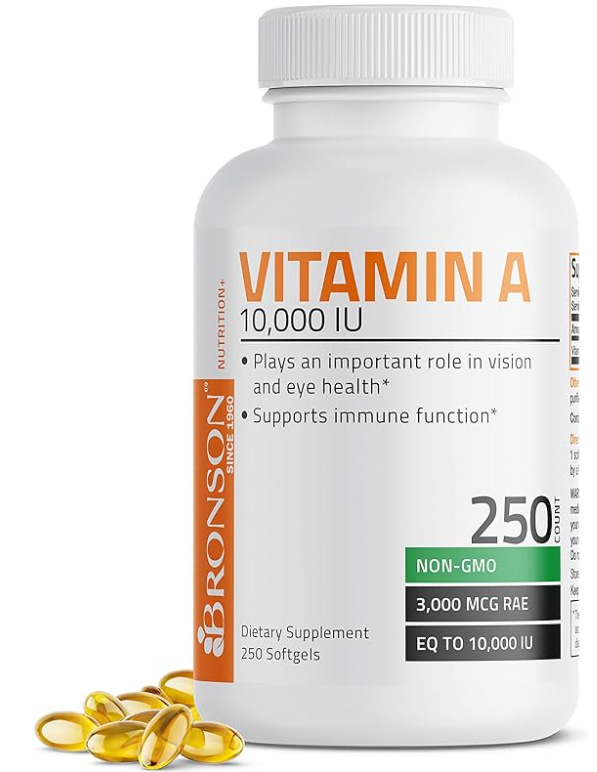






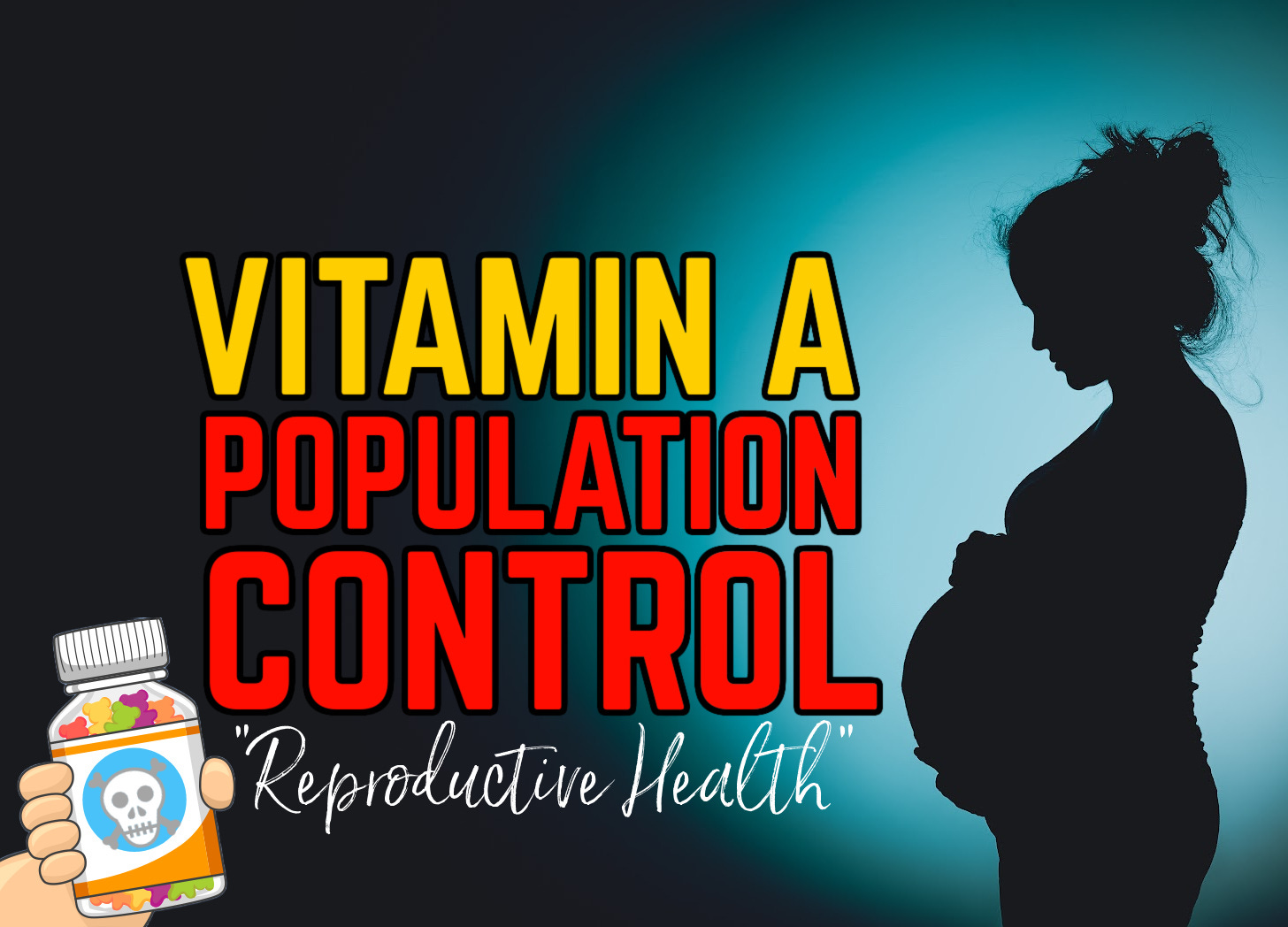


































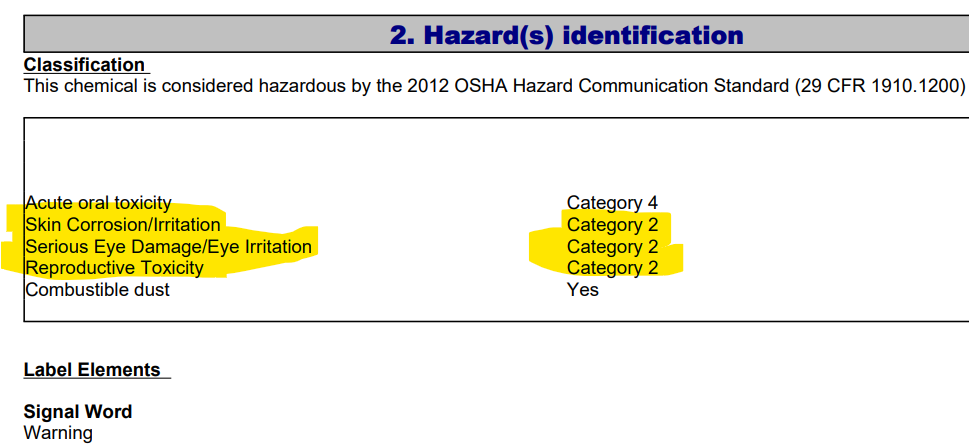
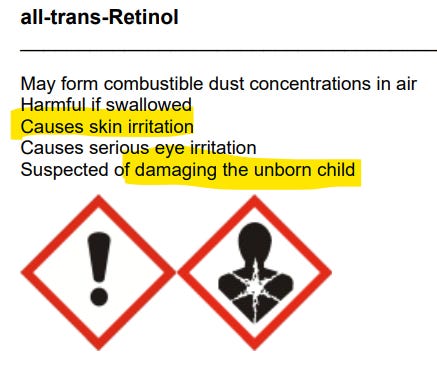



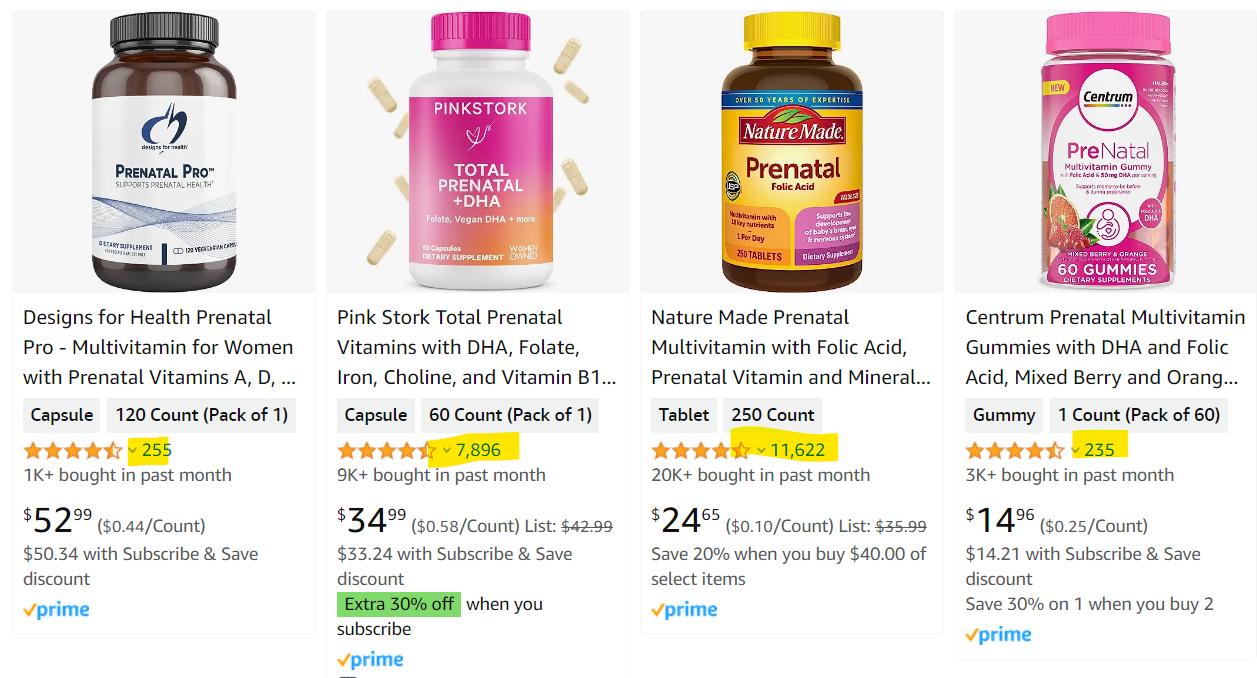







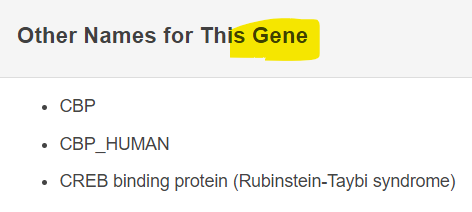



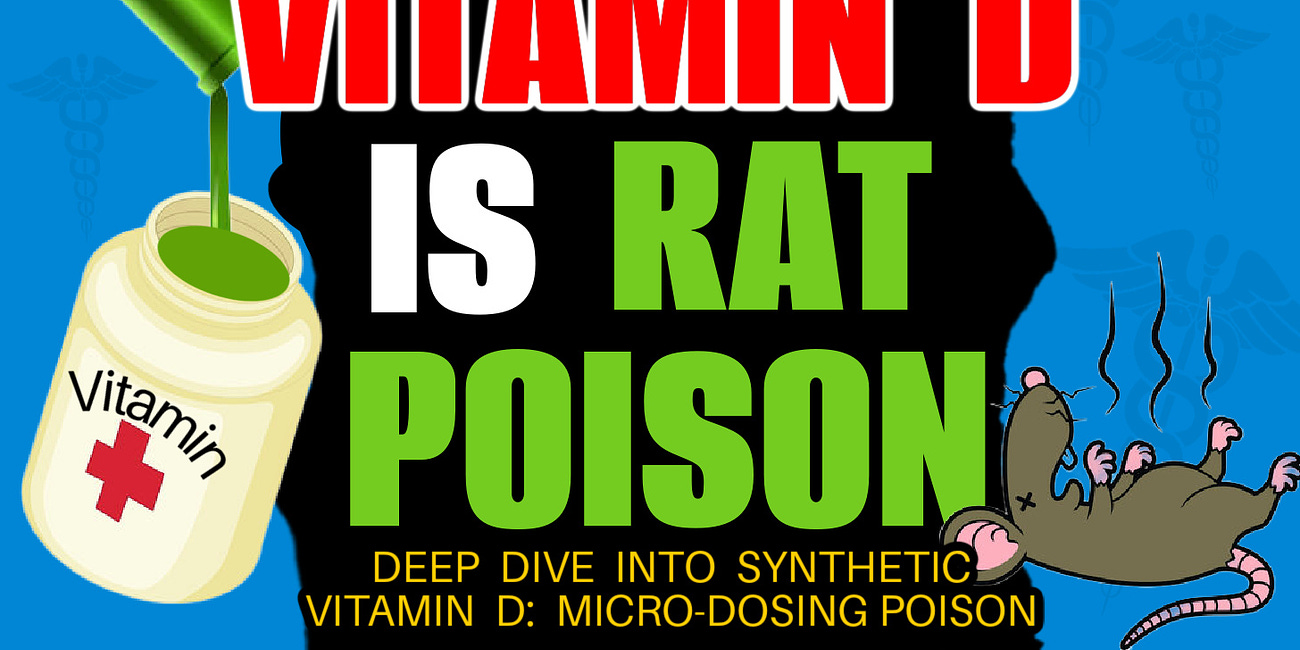
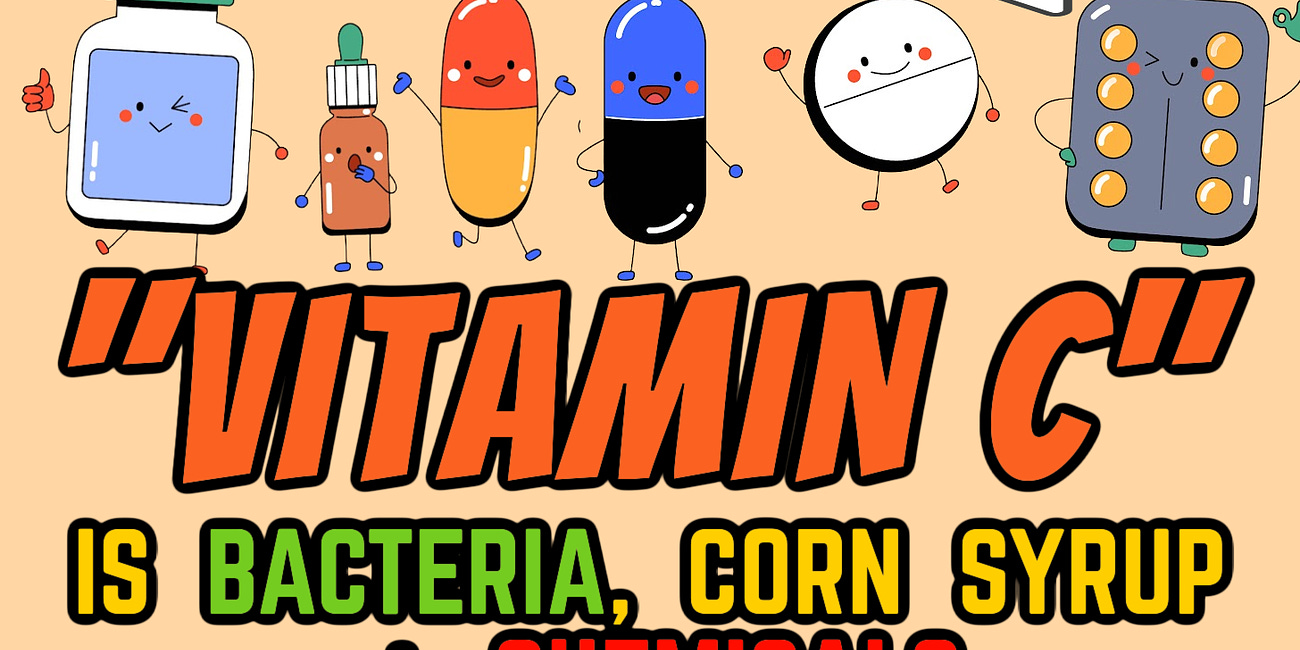
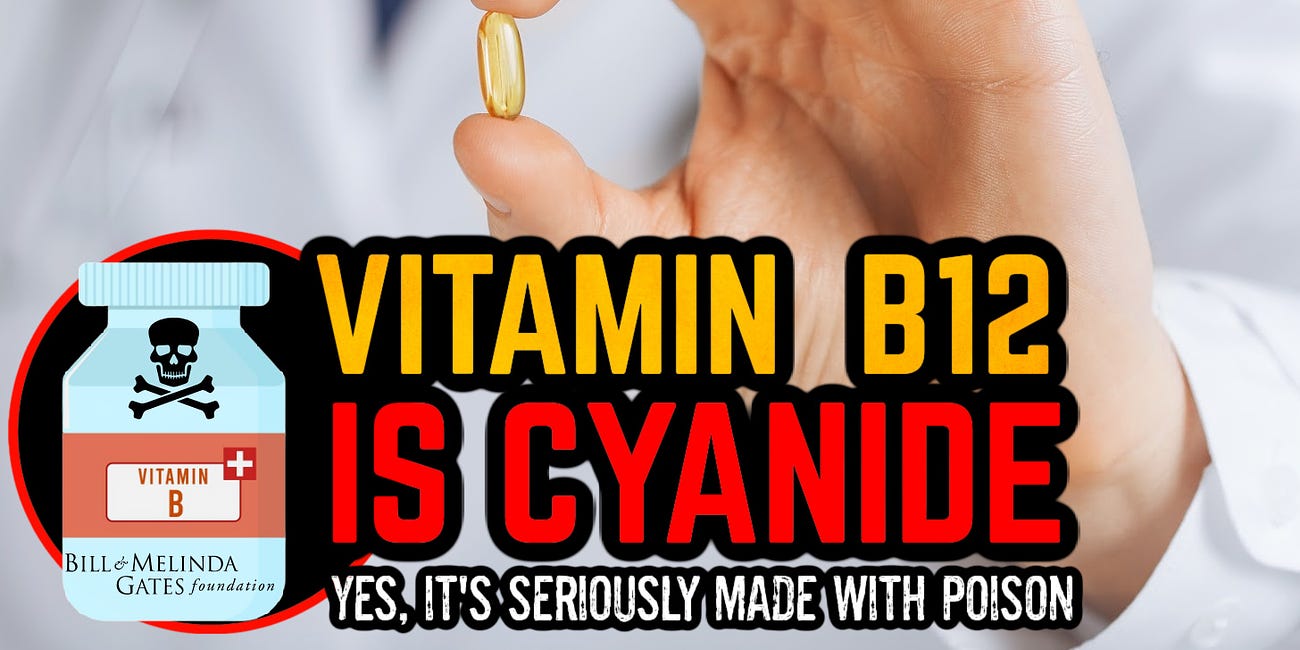
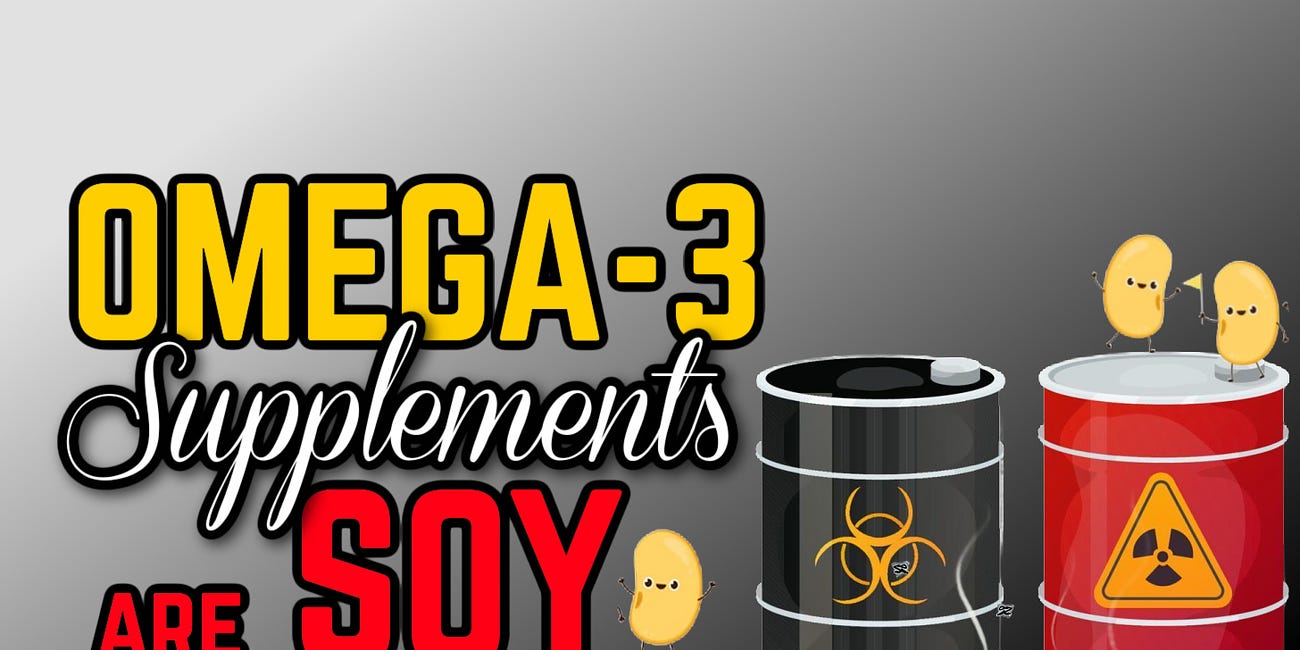

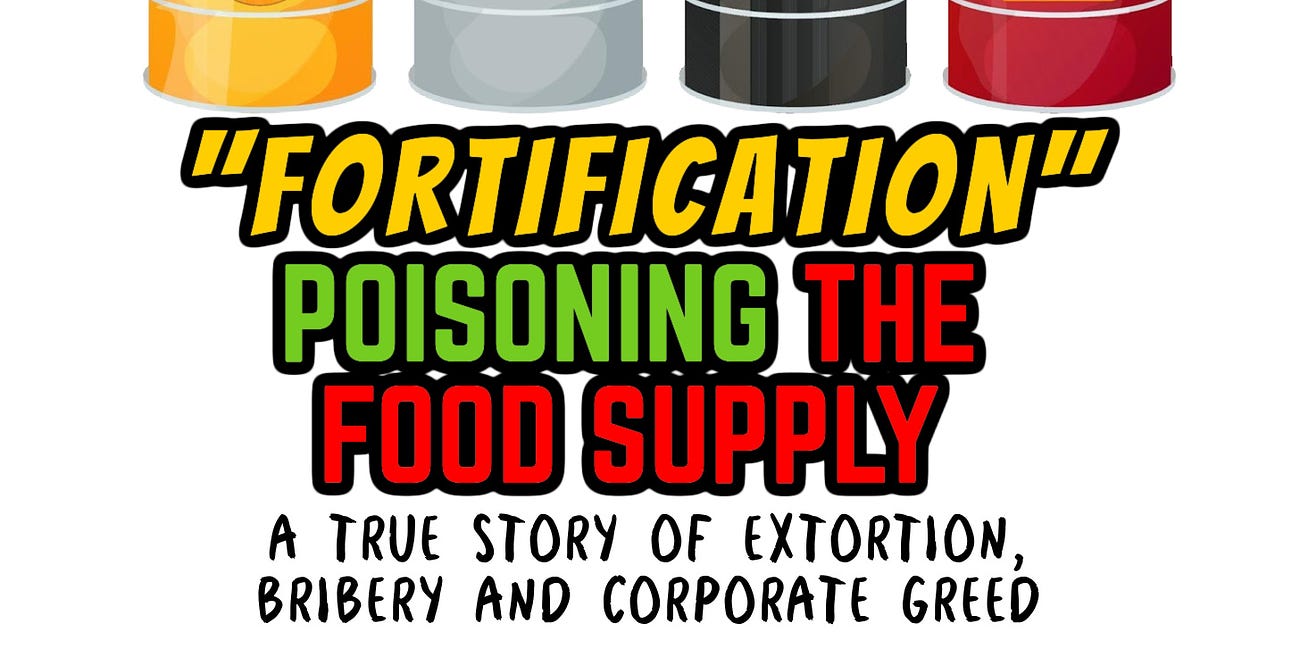


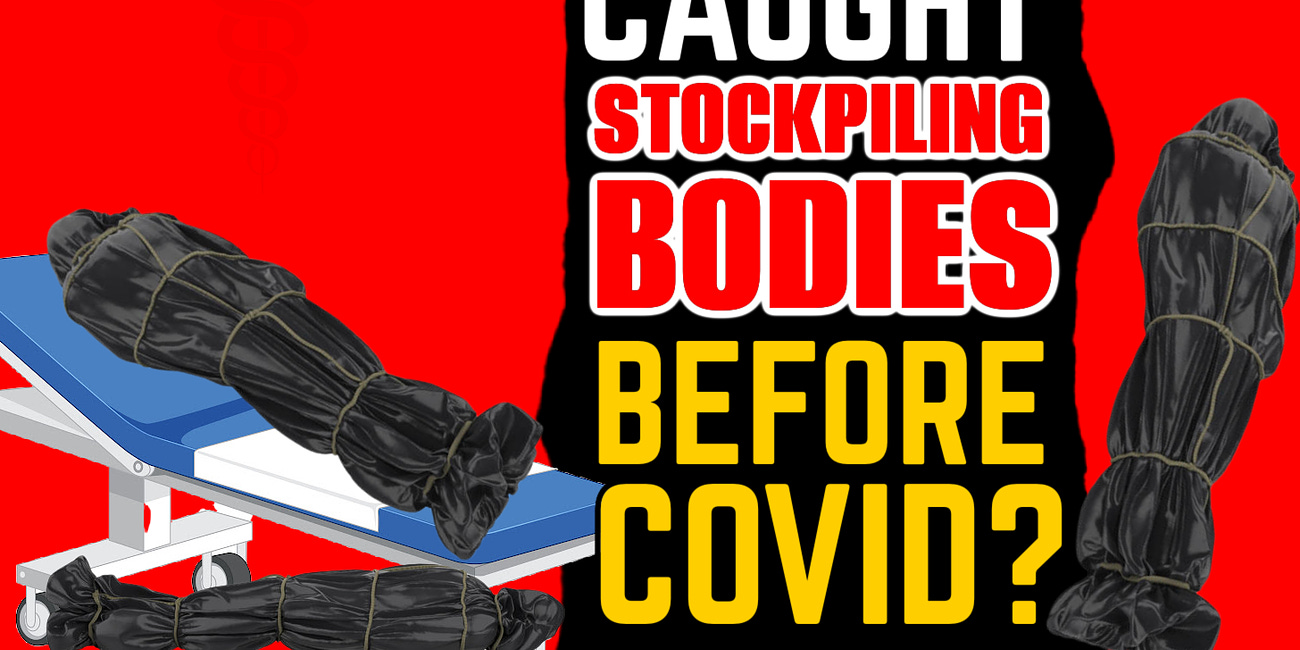







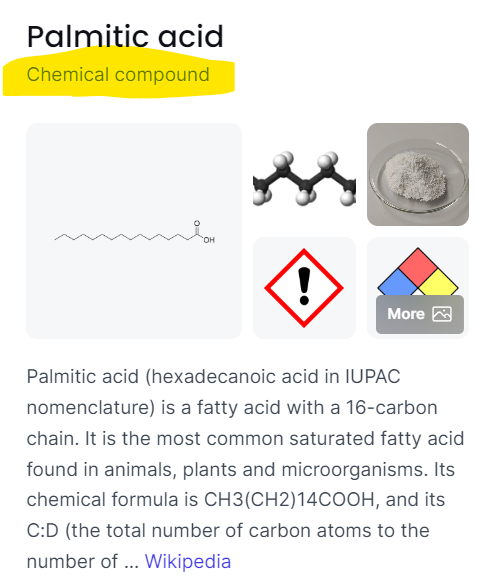














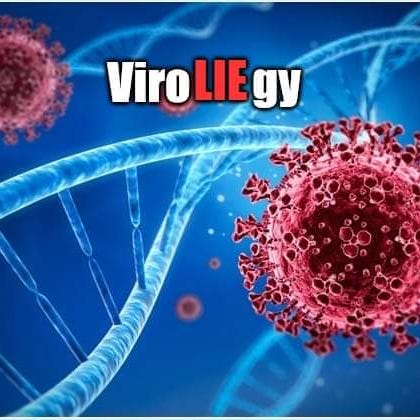


Thank you for taking the time to research these substances. I can validate much of what you are saying. Some of it I knew about and some of it I didn't. Some of it I was just catching on to. I carried out an experiment with supplements over the past several months that has left me with persistent GI problems, forcing me to cancel the experiment. After seeing the evidence you have presented, it makes sense as to what probably went wrong.
You say "I’m not a Scientist". Fair enough. It probably helps, from what I've seen the last few years (and the last few decades to a lesser extent). My field is computer science, which is rather far afield from all this, but I can still understand a fair amount, at least at a high level, because I study other fields outside my own, mostly in self-defense. I am semi-retired, but my work has and still does revolve around database design and data collection, transformation, presentation, and analysis. Not supplements.
What you describe as a possible process for making vitamin A sounds to me at first glance more like a description of how we ourselves metabolize retinyl palmitate. This would be a highly-contained and regulated process, and calling out specific steps within it, such as hydrolysis, might not be helpful for understanding the risks of taking synthetic supplements.
With regard to the CREBBP gene and CREB binding protein, CREBBP is a gene that codes for CREB binding protein. Genetic material is regulated in various ways, and a gene of this kind must be enabled and activated in order for the protein synthesis process to commence, beginning with transcription from DNA to mRNA. This is what I understand by the statement “CREB binding protein carries out its functions by turning on (activating) transcription…”. This is not a gene editing process. It is the first step in producing, on demand (activation), a needed protein from the corresponding genetic template (transcription).
What this article says and what I wrote just above are based upon a particular model of how cells work. That model is being called into question by some (dpl, for instance), and I am beginning to question it myself, but here I am assuming that it does to some extent represent reality, even if the actual mechanisms aren't what they are claimed to be.
So be careful. Take "table salt", for example. Sodium chloride is its main ingredient, and what makes it taste salty. If you were to take a substantial quantity of it, somehow break it down in to sodium and chlorine, ingest the sodium, and inhale the chlorine, you would not be feeling very good. You might not be feeling anything after a while.
That doesn't imply that salt is bad for you. The characteristics of a compound do not necessarily reflect the characteristics of its constituent elements. But if you take salt from its source (such as a salt mine), strip it of all the other stuff that is found with it, and then add a cyanide-based desiccant, that might be bad for you.
I offer this example because I discovered that my housemate had switched brands of salt without my knowledge, going from a sea salt that I had researched to Moron bulk salt with desiccant. The name of the desiccant was disguised, but when I looked it up it turned out to be a cyanide compound.
The government says its safe, of course, but you might not want to expose it to acids (acidic foods, stomach acid, whatever) because that might cause it to break down and release hydrogen cyanide gas, but then the processed food supply is toxic anyway and who would even notice.
Such is our world.
Phenomenal work Agent Lotsa-Numbers! You are worth every penny of a subscription. Thanks! xx